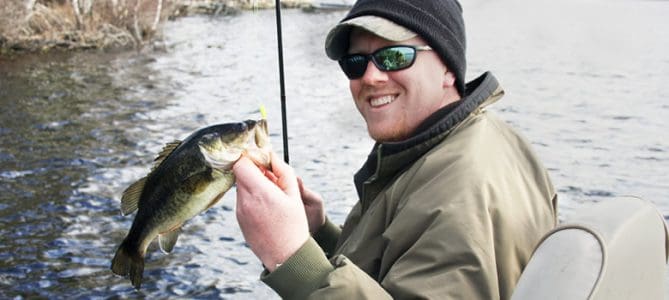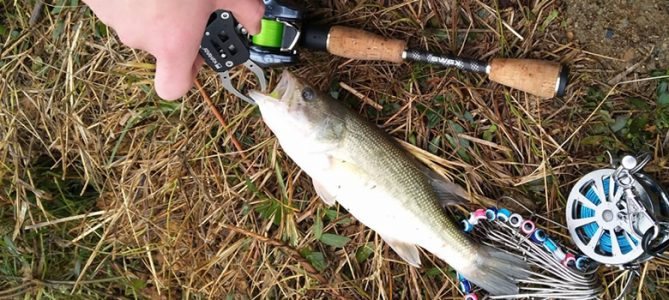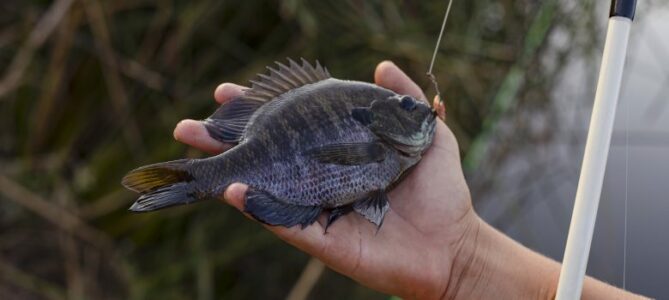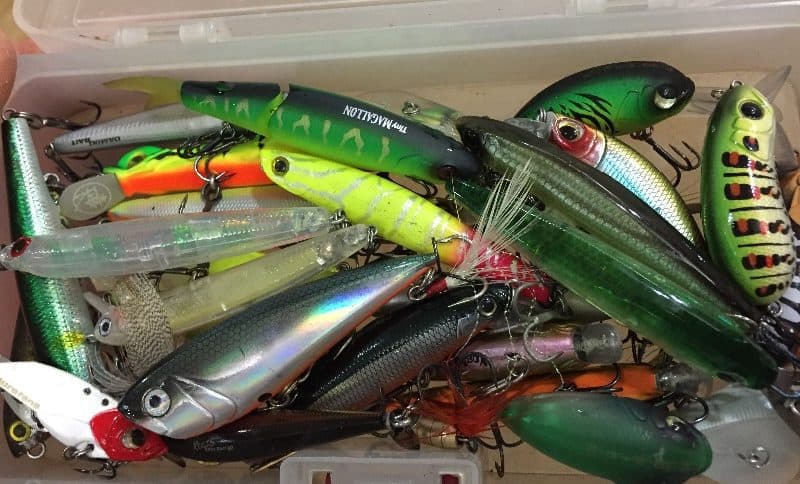If you buy via a link on this page, we may receive a commission, at no extra cost to you.Learn more
Early spring makes me think of fishing for crappie, and today, we will discuss which pound test line is best for this exciting fish.
If you’re looking to get on the water for crappie, then 4-pound test is going to be your best bet for a successful day. 4-pound test will provide the perfect combination of strength and subtly to ensure you don’t spook crappie, all while being able to keep them on the line without breaking off.
Key Takeaway: 4-pound monofilament or fluorocarbon line will be best for crappie.
However, finding the right line is more challenging than just going to your local sporting goods store to pick out any 4-pound test line. The variety of line brands and materials can make finding the perfect crappie line confusing. Today, we’re here to clarify any crappie confusion.
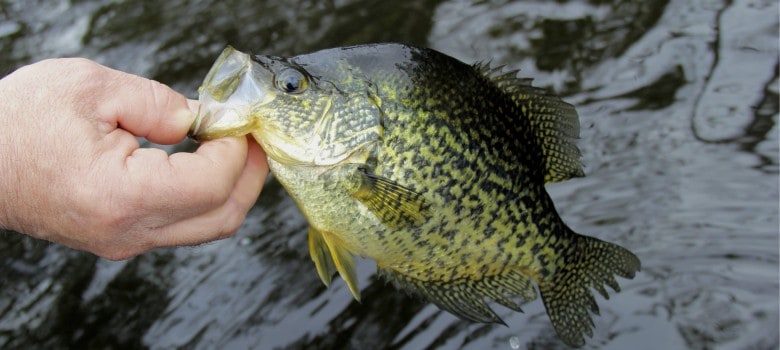
Monofilament, Fluorocarbon, or Braided Line?
Mono, fluoro, and braided line offer crappie advantages and disadvantages. Like all fishing ventures, the best line depends on the situation, so to make life easy, we have broken down these advantages and disadvantages below.
| Type of Line | Advantages for Crappie | Disadvantages for Crappie |
| Monofilament | Low visibility More affordable than fluoro and braid Its supple characteristic makes for easy knot-tying and ideal lure action. | Decreased strength over time from sun absorption.Less abrasion resistance compared to fluorocarbon. |
| Fluorocarbon | Extremely low visibility Strength: superior abrasion resistance compared to a nylon line.Faster sink rate than braid or mono.Highly sensitive for detecting bites. | Price: this stuff isn’t cheap! Stiffness: this makes fluoro more difficult to manage. Poor shock absorption: in the case of a big head-shake or hard hook-set, fluoro easily breaks. Knot strength: be sure to wet the line before you tie your knot! |
| Braid | Superior strength over mono and fluoro. Helpful in high-structure areas. | More expensive than mono. High visibility. Too heavy for a light or ultra-light setup. |
Should I Worry About Line Color?
The short answer? Yes, line color should be a consideration when fishing for crappie. Although many anglers believe crappie are not line sensitive, these fish are not entirely color-blind. Crappies can easily detect red, green, and shades of yellow. Therefore, low visibility lines such as clear and blue will be optimal for a natural presentation. Not to mention, crappie are often shy and finicky, so even if line color is not a deterrent, it’s better to be safe than sorry.
Best Line Color for Crappie:
- Clear: clear line is essential for crappie in clearer water, or while fishing closer to the surface.
- Green: if you’re fishing near brush or trees, or the water has a green tint, a clear line will stand out. Use a green line for a camouflaged approach in murky water.
- Blue: this is a versatile option and one to have in your tacklebox, especially since crappie cannot detect blue easily.
- Yellow: if you want to fish a high-viz line for crappie, yellow should be your choice. The best time of year for a high-viz line with crappie will be in winter when they’re at their lowest depth.
Read more: Tips for Maintaining Your Line
Setting Up Your Rod and Tackle for Crappie:
A light or ultralight setup will be the most fun for crappie, whether on the ice or open water. Since the spring is slowly arriving, let’s talk about open water setups.
A light or ultralight 6 to 7-foot rod with fast action will be your best bet for crappie. Using a fast-action rod, you will easily detect these finicky bites and have a quicker hookset. And with a light or ultralight setup, you’ll surely have a blast fighting these fish.
Quick Setup for Crappie:
- Rod: 6-7 foot light or ultralight, fast action rod.
- Line: 4-pound monofilament or fluorocarbon line.
- Hook: size 4 Aberdeen or 1/16 oz. jighead (more on that later)
- Lures: minnows paired with an Aberdeen hook, or red/yellow/green soft plastic body with 1/16oz. jighead.
Common Crappie Lures:
As listed above, there are two favorite ways to fish for crappie. Both are easy to set up, easy to learn, and effective.
The first option is to use a good ole fashion Aberdeen hook with a minnow. Combine this with a slip bobber 7-11 feet from the hook, and you can quickly find excited crappie 7 feet below the surface. If it’s unnecessary to fish deep below the surface, toss on a regular bobber and get to work!
The second option is similar but uses a small jighead and a soft plastic body. Once again, you can attach a slip-bobber to your desired depth. The fun here is that you can jig, reel, jig again, and reel again to a new spot. This will take some time and practice, but watch for subtle movement on your bobber. Often, crappie will be very delicate when they bite.
Other popular setups include spider rigging, shooting jigs, or even crankbaits.
What’s the Best Time of Day for Crappie?
Crappie generally prefers low light conditions, so depending on the time of year, dawn or dusk will be the most productive time for crappie. However, in the winter, warmer temperatures can help activate the fish. For this reason, many people prefer ice fishing for crappie in the late afternoon or early evening.
How Deep Will I Find Crappie?
At this time of year in early spring, crappie can be found suspended around 8-14 feet above holes. Search for holes and use a slip-bobber to reach these depths.
Is Crappie Good to Eat?
Absolutely! Whether fried, baked, or boiled, crappie is an excellent-tasting fish.
Summary
Fishing for crappie can be an exciting day on the water, and if you target these fish, 4-pound monofilament or fluorocarbon will be your best type of line. Pair this line with a light or ultralight setup, and you’re ready to have an exciting day on the water!

